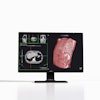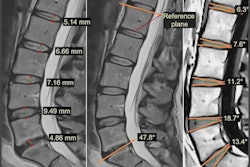Dear Advanced Visualization Insider,
The growing utility of MRI radiomics was evident across a wide range of presentations at this week's International Society for Magnetic Resonance in Medicine (ISMRM) annual meeting in London.
For example, the combination of a machine-learning algorithm and radiomics of contrast-enhanced MRI of the small bowel enabled differentiation between subtypes of inflammatory bowel disease. How well did their model perform in distinguishing between ulcerative colitis and Crohn's disease? Get the details in this edition's Insider Exclusive.
MRI radiomics can help to predict whether prostate cancer will metastasize, according to another talk at ISMRM 2022. A group from Stanford University also shared how a quantitative technique called MR fingerprinting could facilitate a one-minute brain MRI scan. In addition, an MRI registration method can track changes in intervertebral disks.
In other advanced visualization news, MRI radiomics-derived brain age can be predictive of functional outcome after acute ischemic stroke. Radiomics is also primed for a bigger role in genitourinary applications, according to a presentation at the annual American Roentgen Ray Society meeting earlier this month.
Artificial intelligence (AI)-assisted CT-based body composition analysis has demonstrated value for a variety of important clinical applications. Meanwhile, MRI data has revealed that body composition can change markedly over a two-year period, potentially offering a new window into the aging process.
Automated 3D segmentation software can help radiologists identify pulmonary hypertension on CT pulmonary angiography. Also, CT colonography (CTC) utilization rates remain low, and efforts to boost CTC screening are definitely needed, according to a recent study. What's more, 3D radiomics features and AI can opportunistically screen for osteoporosis on lumbar spine CT images.
Augmented reality technology can serve as a powerful tool in radiology education, training, and intervention. In other developments, advanced practice providers are taking on a greater role in image-guided paracentesis and thoracentesis procedures.
Is there a story you'd like to see covered in the Advanced Visualization Community? Please feel free to drop me a line.




















